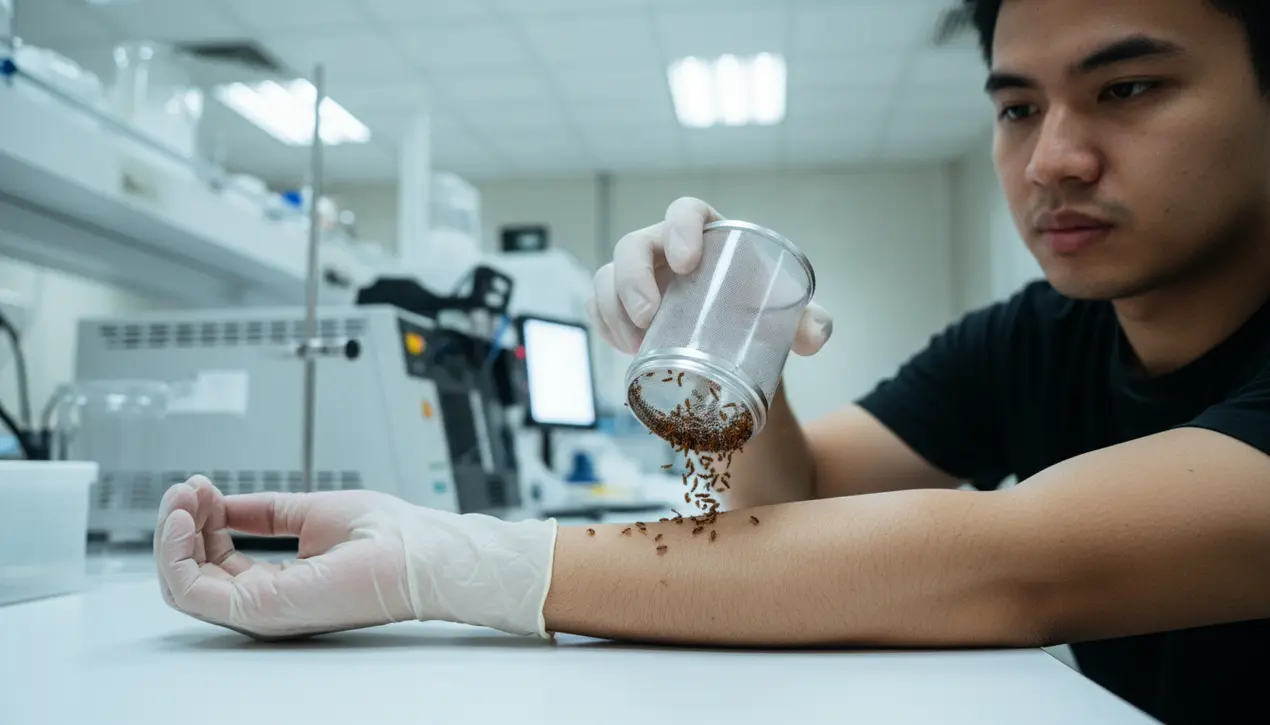
SciencebiologyGenetics
Bedbugs Used as Unlikely Crime-Solving Tool in Malaysia
KE
Kevin White
15 hours ago7 min read2 comments
Under the stark glare of laboratory lights, a research assistant performs a ritual that would unsettle most: he extends his forearm and carefully inverts a mesh-topped container, allowing a wriggling mass of *Cimex lectularius* to feed on his blood. This isn't a scene from a horror film but a deliberate act of scientific sacrifice at the Science University of Malaysia (USM), where researchers are pioneering a revolutionary forensic methodology.Long-loathed as nocturnal nuisances that leave behind itchy welts, bedbugs are being systematically rebranded as one of the most unexpected crime-busting allies in modern criminology. The foundational principle is as gruesome as it is brilliant; these insects, after feeding on a human host, retain a high-quality DNA sample within their digestive tracts for up to seven days.This biological time capsule provides a potential goldmine for investigators arriving at a crime scene where traditional evidence—fingerprints, hair, or skin cells—may be absent or contaminated. Imagine a scenario where a perpetrator, believing they have left no trace, is unwittingly bitten by a bedbug during the commission of a burglary or assault.That insect, collected by forensic entomologists, can then be analyzed to provide a genetic fingerprint of the suspect, effectively turning a common pest into a silent, six-legged witness. This breakthrough sits at the fascinating intersection of biotechnology and forensic science, a domain I frequently explore when discussing CRISPR and the future of medicine.The USM team’s work involves meticulous DNA extraction and amplification techniques, not unlike those used in advanced genetic sequencing, to build a viable profile from the miniscule blood meal. The implications are profound, extending beyond simple property crimes to potentially solving violent offenses where biological evidence is scarce.Historically, forensic entomology has primarily focused on using insect life cycles to establish post-mortem intervals in death investigations, but this application for live suspect identification is a paradigm shift. Of course, significant hurdles remain before this technique sees widespread adoption in courtrooms.Defense attorneys will undoubtedly challenge the chain of custody for such an unconventional evidence source, and questions about secondary transfer—could a bedbug have fed on an innocent person elsewhere and then been transported to the crime scene?—require rigorous experimental protocols to address. Furthermore, the methodology must be standardized and validated across different bedbug populations and environmental conditions to ensure its reliability meets the stringent demands of the judicial system.Yet, the potential is undeniable. In a world where criminals are increasingly forensically aware, this Malaysian innovation represents a powerful, biological countermeasure. It’s a compelling example of how looking at nature’s most reviled creatures through a futuristic, scientific lens can yield tools that are as ingenious as they are improbable, pushing the boundaries of how we conceive of justice in the 21st century.
#featured
#bedbugs
#forensic science
#crime solving
#DNA analysis
#entomology
#Malaysia
#research
Stay Informed. Act Smarter.
Get weekly highlights, major headlines, and expert insights — then put your knowledge to work in our live prediction markets.
Related News
Comments
Loading comments...
© 2025 Outpoll Service LTD. All rights reserved.